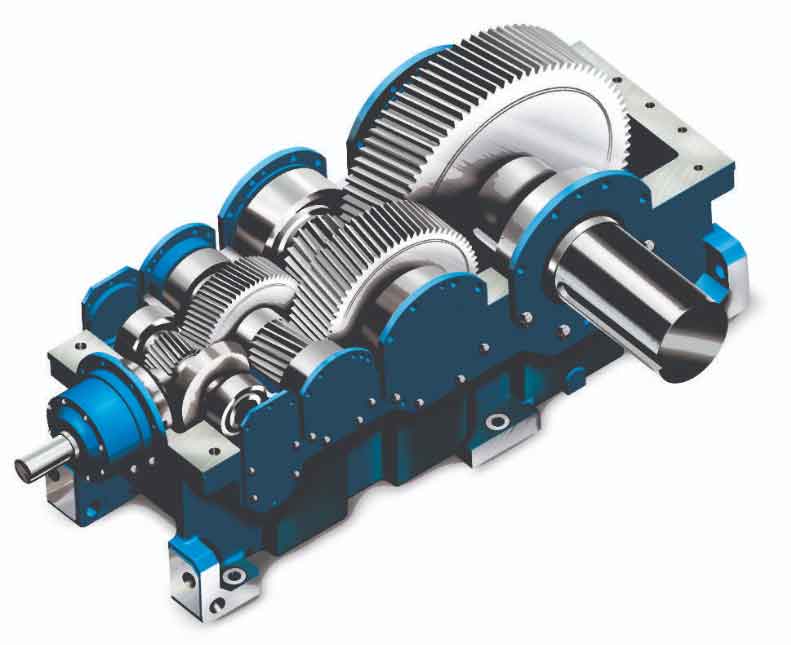Manufacturing helical gear involves several specialized techniques to accurately produce the angled teeth that characterize these gears. The manufacturing process needs to address the helix angle and ensure the gears mesh smoothly, operate efficiently, and withstand the intended loads. Here’s a comprehensive guide to the various techniques used in helical gear manufacturing:

1. Gear Hobbing
- Description: Gear hobbing is a popular and efficient method for manufacturing helical gear. It uses a hob, which is a cylindrical cutting tool with helical cutting teeth that match the helical gear’s helix angle. The helical gear blank and the hob rotate synchronously in a continuous motion, allowing the hob to progressively cut the helical gear’s teeth at the desired angle.
- Applications: Ideal for medium to high-volume production, hobbing can produce helical gear with a wide range of sizes and helix angles. It’s commonly used for helical gear in automotive transmissions and machinery.
2. Gear Shaping
- Description: Gear shaping uses a reciprocating cutter that resembles the helical gear tooth profile. The cutter rotates at the helical gear’s helix angle, and the helical gear blank rotates in synchronization with the cutter’s strokes to form the helical teeth. This process can create internal and external helical gear.
- Applications: Gear shaping is versatile and can be used for small to medium batches. It’s particularly useful for producing internal helical gear and complex shapes.
3. Gear Milling
- Description: In helical gear milling, a milling cutter in the shape of helical gear tooth space is used to cut each tooth individually. CNC machines can be programmed to cut the proper helix angle into the helical gear. This process is slower than hobbing but offers flexibility in prototype and small batch production.
- Applications: Gear milling is suitable for low-volume production or when manufacturing gears with unique shapes or sizes that are not feasible with hobbing or shaping.
4. Gear Grinding
- Description: Gear grinding is a finishing process that improves the precision and surface quality of a helically cut gear. Using a grinding wheel that matches the helical gear’s tooth profile, this process can achieve high accuracy and smooth finishes. Helical gear grinding is often performed after hobbing or shaping to refine the helical gear teeth and improve their dimensional accuracy.
- Applications: Primarily used for high-precision applications where noise reduction and high load capacity are crucial, such as aerospace and high-performance automotive helical gear.
5. Powder Metallurgy
- Description: Powder metallurgy involves compressing metal powder into helical gear blank shape and then sintering it at high temperatures. For helical gear, the powder is compacted in a mold that already features the helix angle, creating the helical gear’s shape without the need for cutting.
- Applications: This method is used for producing gears that require less strength or for applications where cost efficiency in large-volume production is a priority.
Manufacturing Considerations
- Material Selection: The choice of material impacts the manufacturing process and the helical gear’s performance. Common materials include various grades of steel, brass, and composites.
- Heat Treatment: Processes like carburizing, nitriding, or induction hardening are often applied after the initial shaping to enhance the helical gear’s durability and wear resistance.
- Precision and Tolerances: Advanced manufacturing techniques, coupled with precise measurement and inspection methods, ensure the helical gear meet the necessary specifications.
- Lubrication and Finishing: Post-manufacturing treatments may include surface finishing techniques and the application of lubricants to reduce friction and wear.
Each manufacturing technique has its advantages and is chosen based on the specific requirements of the helical gear application, including volume, material, precision, and cost constraints. The advancement in CNC technology and automation has also significantly influenced the choice and efficiency of these manufacturing processes, allowing for more complex and precise helical gear production.
